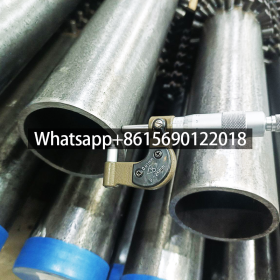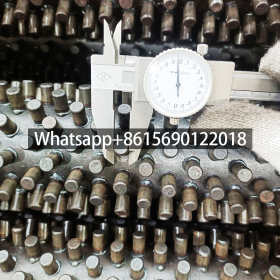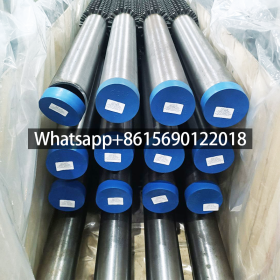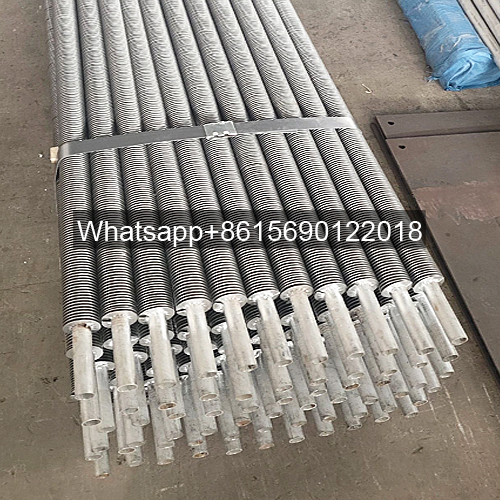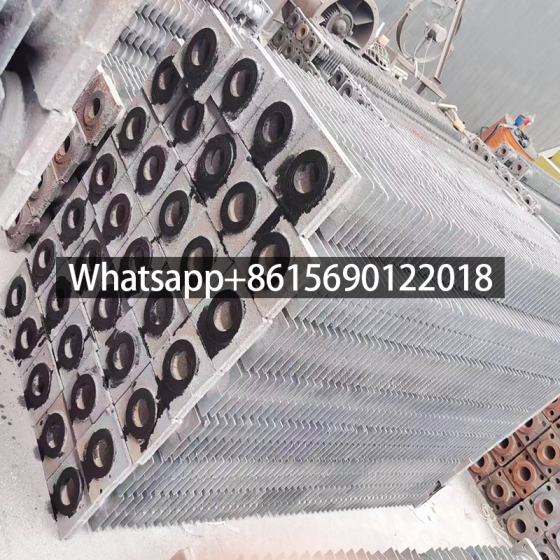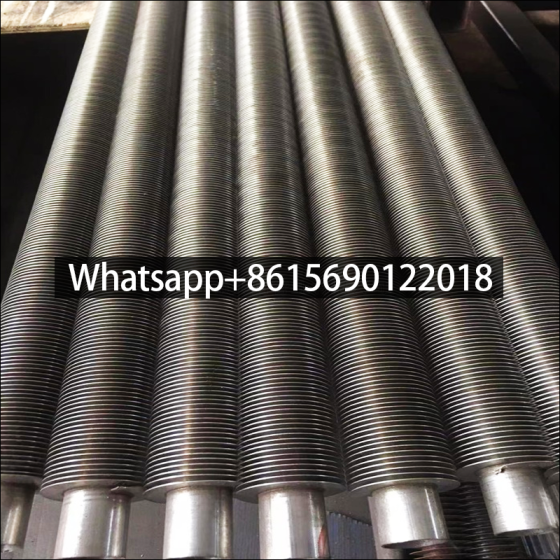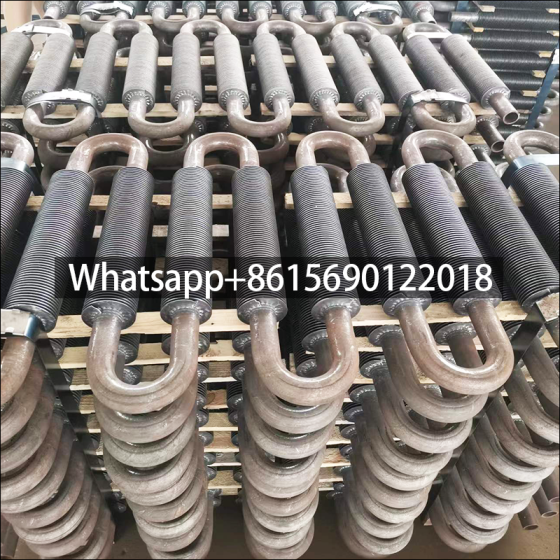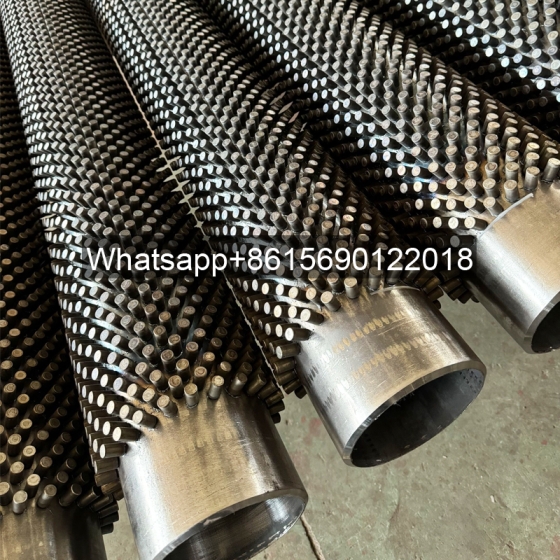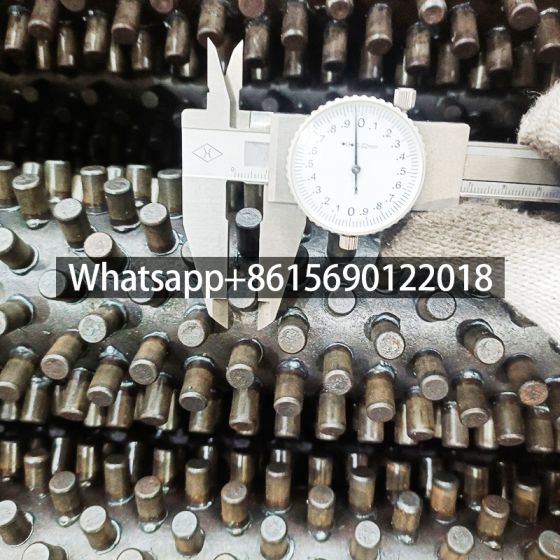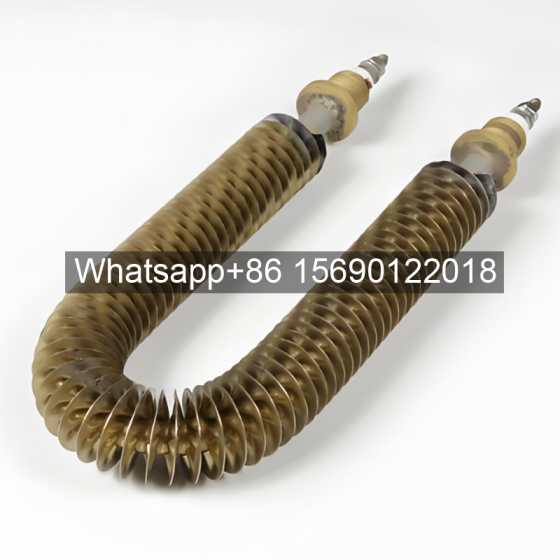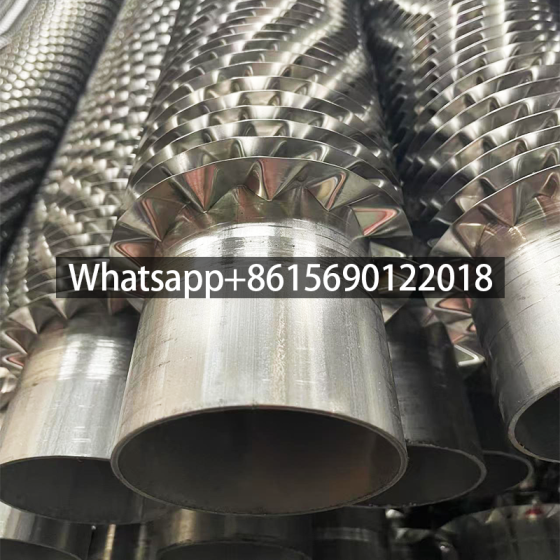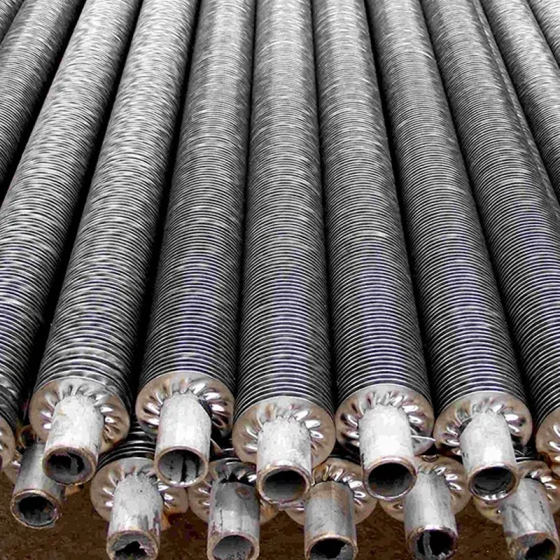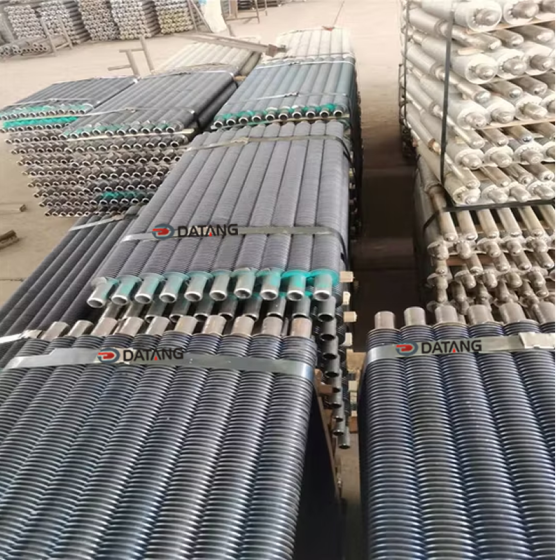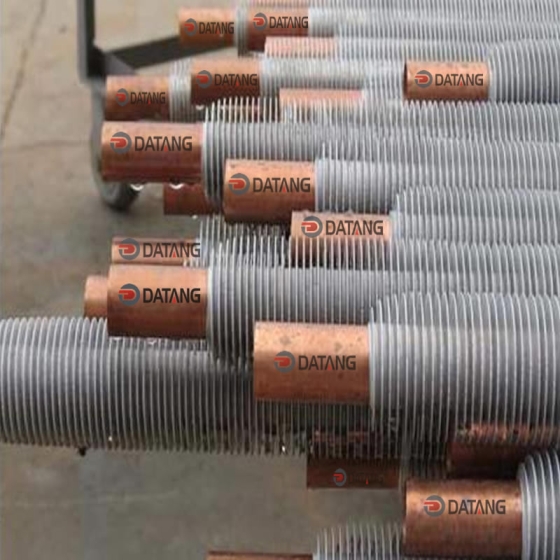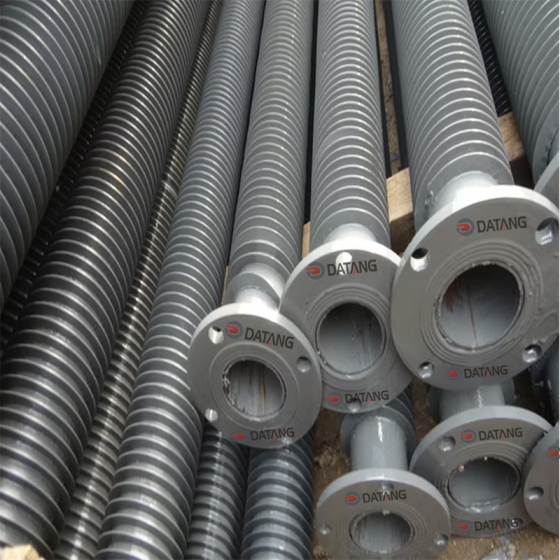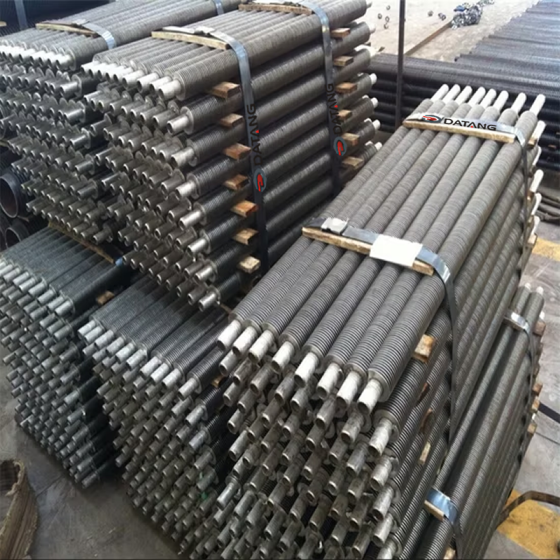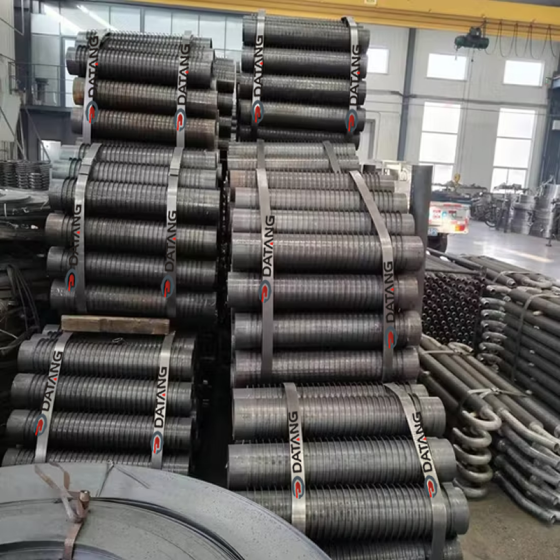Studded Tube for Heat Exchanger
1. What is a Studded Tube?
A Studded Tube (also known as Pin Tube) is a specialized heat transfer component designed with densely welded cylindrical studs (or pin fins) on the outer surface of a base tube. Its core function is to enhance heat exchange efficiency by expanding the heat transfer area and disrupting fluid boundary layers in gas-liquid or gas-gas media applications13.
Specification Parameters
Below is the consolidated table of core specifications for Studded Tubes, integrating welding processes, structural dimensions, and performance metrics13:
| Parameter Category | Specification Range | Technical Description |
|---|---|---|
| Base Tube | OD: 20–426 mm; Thickness: 2–12 mm | Seamless carbon/stainless steel per GB/T 8163 or GB 5310 standards. |
| Stud Dimensions | Diameter: 3–8 mm; Height: 5–25 mm | Cylindrical/conical studs; longitudinal spacing: 8–30 mm (hexagonal/square patterns). |
| Welding Process | Resistance welding; Penetration ≥1.5 mm | Weld protrusion ≤1 mm (no-spatter standard); welding efficiency: 30 studs/minute. |
| Pressure Tolerance | ≤16 MPa (carbon steel) | Alloy steel for higher pressures; hydrostatic testing at 1.5× design pressure. |
| Temperature Range | ≤600°C (carbon steel); ≤800°C (stainless) | 15CrMo alloy recommended for high-temperature applications. |
| Heat Transfer Area Ratio | 2–3× bare tube | Stud density impacts efficiency (typical: 120–400 studs/m²). |
| Self-Cleaning | Vibration frequency: 5–15 Hz | Cantilever design extends ash-cleaning cycle to 4× bare tubes (ash shear stress: 0.5–1.2 kPa). |
| Material Compatibility | Carbon steel/stainless steel/alloy steel | 316L stainless steel for corrosive environments; stud/base material must match. |
| Tolerance Control | Straightness: ≤2.5 mm/3 m | Base tube ovality ≤1%; stud height tolerance: ±0.3 mm. |
Notes: Adjust parameters based on operational conditions (e.g., fluid viscosity, dust concentration).
Key References
- Base tube standards5, stud layout patterns36, and welding efficiency12 align with industrial specifications.
- Self-cleaning mechanisms are optimized for high-ash environments8, while material compatibility ensures durability.
This table integrates critical technical data from multiple sources, ensuring compliance with design and operational requirements.
2. Nail Head Pipe Working Principle
The Studded Tube achieves superior heat transfer through a two-dimensional enhanced mechanism:
Core Principles
-
Heat Transfer Area Expansion
- Stud arrays increase the effective heat transfer area to 2–3× that of bare tubes (typical stud density: 15–30 studs/dm²).
- Zigzag welding patterns at stud roots reduce contact thermal resistance by 40%3.
-
Boundary Layer Disruption
- Turbulent disturbances from studs reduce fluid boundary layer thickness by 60–80%, particularly effective in low-velocity flows (Re = 500–2000).
- Heat transfer coefficients improve by 30–50% compared to bare tubes under optimized flow conditions.
3. Studded Pipe Structure & Manufacturing Process
Stud Layout
- Studs are welded in square or hexagonal patterns with adjustable longitudinal spacing (8–30 mm).
- Dimensions:
- Stud diameter: 3–8 mm
- Stud height: 10–50 mm.
- Symmetric distribution ensures uniform heat transfer and enables vibration-driven self-cleaning under airflow.
Welding Process
- Resistance welding or medium-frequency welding ensures precise stud attachment.
- Key parameters:
- Weld root height: ≈1 mm (no spatter requirement).
- Material compatibility: Carbon steel, low-alloy steel, stainless steel (SS304/SS316).
- Welding efficiency: 30 studs/minute3.
Studded Tube Material Combinations
| Base Tube | Stud Material | Applications | |
|---|---|---|---|
| Carbon steel | Carbon steel | Boiler pipes, industrial heaters | |
| Stainless steel | Stainless steel | Corrosive environments (e.g., FGD) | |
| Low-alloy steel | Low-alloy steel | High-temperature exchangers |
Studded Pipe Performance Advantages
- Enhanced Heat Transfer: 2–3× larger surface area with optimized turbulence.
- Anti-Fouling: Self-cleaning via airflow-induced vibrations reduces maintenance needs.
- Material Versatility: Supports carbon steel, stainless steel, and alloy combinations for extreme conditions.
- Cost Efficiency: Reduced energy consumption and extended service life due to minimized fouling
4. Application Fields of Studded Tubes
1. Industrial Manufacturing
- Petrochemical Refining Equipment
- Used in convection sections of tubular heating furnaces to enhance flue gas heat transfer efficiency, achieving thermal intensity comparable to radiation zones.
- Applied in heavy oil heat exchangers for high-viscosity media (>1000 cP), utilizing dense stud layouts to optimize heat transfer.
- Chemical Processing Equipment
- Serves as reactor heat exchange units in corrosive environments4.
- Facilitates stable transport of high-temperature fluids (≤600°C) in chemical piping systems.
2. Energy & Environmental Protection
- Flue Gas Waste Heat Recovery
- Recovers waste heat from coal-fired boilers and industrial kilns (<1200°C), achieving 2–3× larger surface area compared to bare tubes.
- Used in SCR denitration systems for gas cooling, suitable for dust concentrations ≤50 g/Nm³.
- Oil & Gas Transportation Systems
- Employed in long-distance pipelines for oil/gas transmission, ensuring high-pressure sealing (≤16 MPa) via spiral welding.
- 316L stainless steel studded tubes resist salt spray corrosion in offshore platforms.
3. Construction & Infrastructure
- Fluid Transport Networks
- Enhances pressure resistance in building drainage and heating systems, extending service life.
- Reduces fluid resistance and vibration noise in HVAC refrigerant pipelines.
- Underground Utilities
- Acts as corrosion-resistant cable conduits with seismic resilience for underground networks.
Specialized Applications
| Scenario | Technical Requirements | Typical Applications | |
|---|---|---|---|
| Marine Boilers | Salt spray corrosion resistance | Anti-fouling superheater tube arrays | |
| Nuclear Equipment | High-temperature/pressure compatibility (≥16 MPa) | Secondary heat exchange units in cooling systems | |
| Aerospace | Lightweight titanium alloy studded tubes | Vibration-damping fuel delivery pipelines |
Selection Guidelines
- Fluid Properties: For dusty gases, prioritize stud heights ≥25 mm (cantilever design) to enhance self-cleaning.
- Environmental Conditions: Use aluminized coatings or 316L stainless steel in corrosive environments.
- Process Parameters: Resistance welding achieves 30 studs/minute with ≥98% fusion rate.
 dtfinnedtube.com
dtfinnedtube.com



